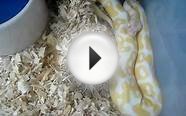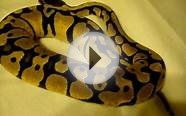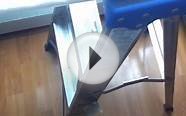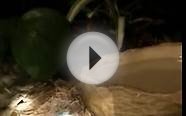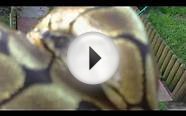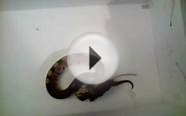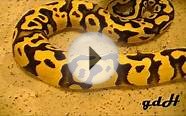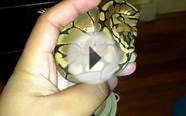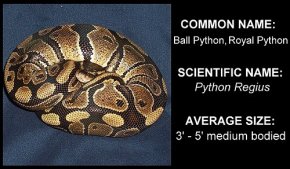Ball Python Lighting
DIET: Rodents
TEMPS: 80-84 F w/ basking 88-94 F
HUMIDITY: 50%-60%
LIFESPAN: 20-30 years or more
DESCRIPTION
Ball pythons are a relatively small, thick-bodied species of python featuring a slender neck and well differentiated head. Common "wild-type" ball pythons are highly variable in color and pattern, but all feature some version of tan "blobs" on a chocolate or black background, edged with varying degrees of white, with white bellies that may or may not contain some dark speckling pattern. Thanks to the efforts of breeders and enthusiasts, however, ball pythons are becoming increasingly available in a wide range of brilliant colors and patterns called "morphs."
Ball pythons are found in the wild in central and west Africa and typically make their homes in abandoned rodent burrows or termite mounds. Their common name "ball" comes from their tendency to curl up into a ball and hide their head within their coils when threatened. This un-aggressive defense mechanism, combined with their manageable size (
HOUSING
The most popular and convenient methods of housing ball pythons includes glass tanks, plastic tubs, or professionally built enclosures. Whether you choose one of these, or choose to make your own, any enclosure must provide the following necessities:
- adequate ventilation to prevent stagnant air
- thermal gradient
- proper humidity levels
- sufficient space without being too large
- security to prevent escape
CAUTION: Never use TAPE inside an enclosure. No matter how secure you think it is, there is a high risk that the snake will find a way to get stuck on it, causing injury or even death.
GLASS – Aquariums or "Kritter Keepers" (glass tanks made for holding small animals) are readily available, offer the best visibility for viewing your snake and come in a wide variety of sizes. However, it can be difficult to maintain the proper heat and humidity, especially in larger tanks. In addition, the clear sides all around may make a shy ball python feel exposed and insecure. Care must be taken to insure the lid is secured to prevent escape.
You might also like
